Mothercraft for Queensland Girls: An interesting experiment in the education of female students in twentieth century Queensland.
By Christina Ealing-Godbold, Research Librarian, Library and Client Services | 4 March 2023
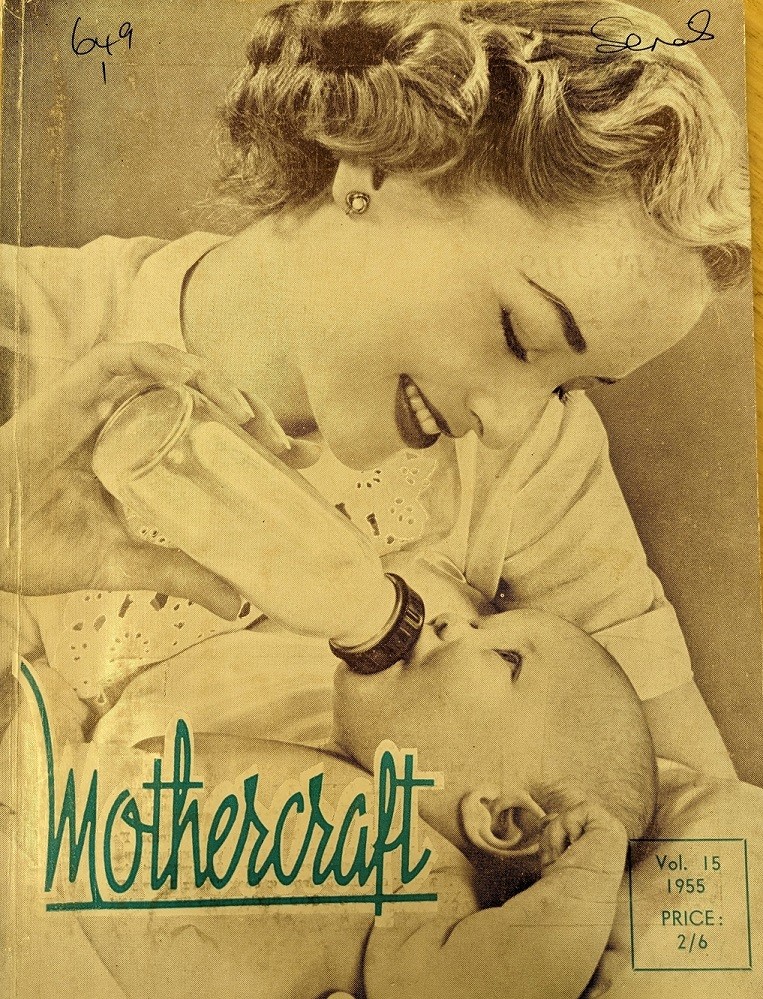
“Mothercraft” Journal. Mothercraft Association of Queensland; Creche and Kindergarten Association of Queensland 194? - 1978; Brisbane : Strand Press Issue 1950. State Library of Queensland.
On International Women’s Day, it is fascinating to reflect on the Queensland State Government’s decision, amid the Great Depression of the 1930s, to instruct girls aged 13 in the skills of mothercraft. In an interesting statement of the times, a complementary course on Fathercraft was not offered to male students.
Understanding the concept of this program and its compulsory application to all Queensland high school girls illustrates just how far our society has progressed in providing positive opportunity and education for all students regardless of gender.
Did you have to bathe a life-sized plastic doll in a plastic baby bath under the watchful eye of a Mothercraft nurse? Likewise, you may have had to compile a scrapbook of suitable dietary and nutritional information for a new baby. I certainly did in my Queensland high school in the 1970s, as did my mother who undertook the Mothercraft training at South Brisbane Intermediate School in 1937. The program had not changed to any substantial degree in its content or assessment in almost forty years.
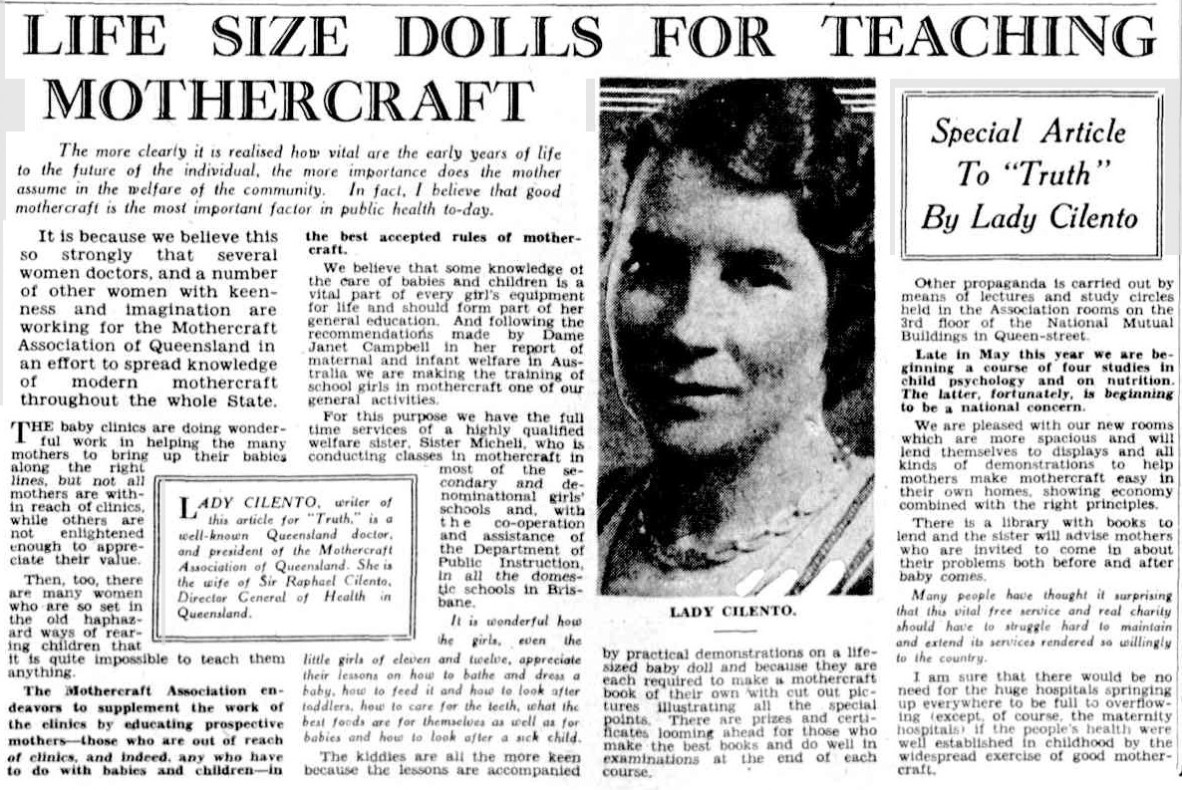
LIFE SIZE DOLLS FOR TEACHING MOTHERCRAFT (1937, April 4). Truth (Brisbane, Qld. : 1900 - 1954), p. 27. http://nla.gov.au/nla.news-article198682363
Some background
Those female students who attended state high schools in Queensland and in addition, some who attended private schools, were entreated to mothercraft as a subject. The aim was attainment of a certificate to certify that the student was suitably trained in the art of mothercraft.
What led to this extraordinary program for girls? It was influenced by several factors including the poor health of many children aged between 1 and 5 years, the poor diet available to many babies in the depression years of the 1930s, and a doctor called Lady Phyllis Cilento, known in Queensland as “The Medical Mother.” Dr Cilento was particularly interested in nutrition for children, and had become alarmed at the poor nutrition available for many babies as well as the poor health of the mothers.
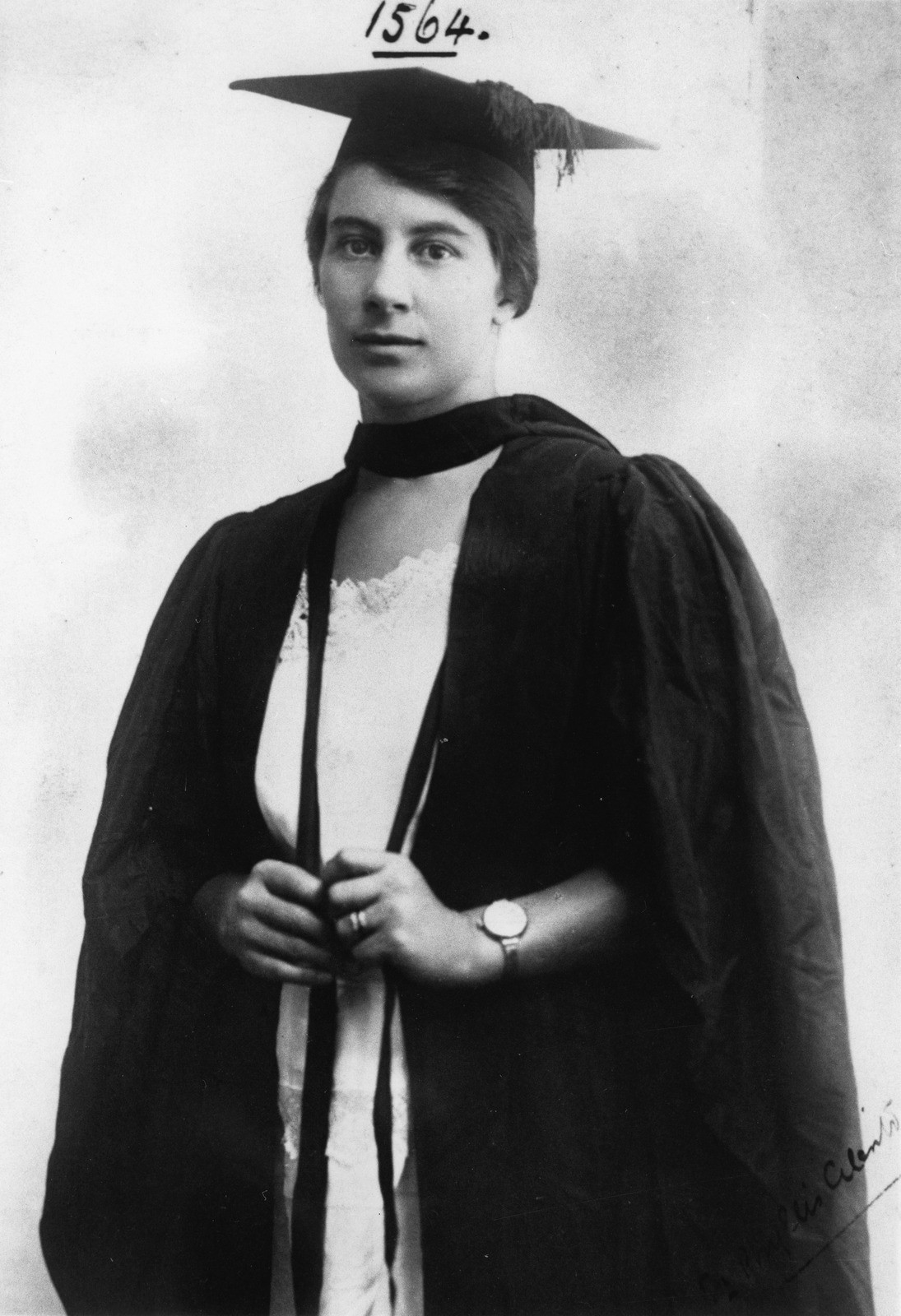
Dr Phyllis Cilento, “The Medical Mother” in her Graduation Gown. John Oxley Library, State Library of Queensland. Original version: photographic print : black & white Negative number: 55943 https://hdl.handle.net/10462/deriv/74179
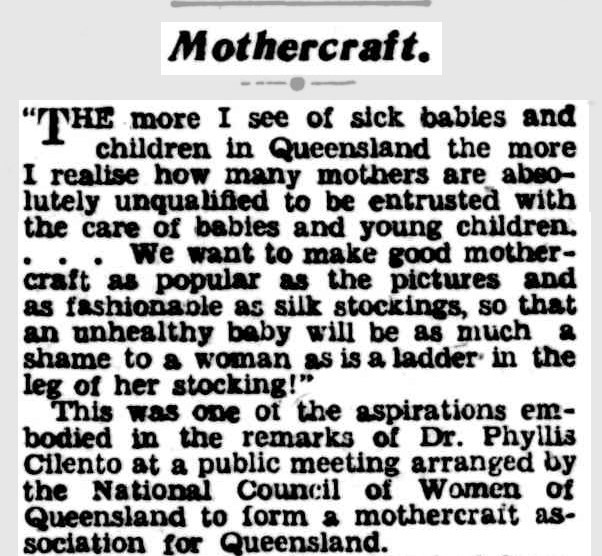
Mothercraft. (1931, October 22). The Queenslander (Brisbane, Qld. : 1866 - 1939), p. 35. Retrieved March 4, 2023, from http://nla.gov.au/nla.news-article23143380
Likewise, the Director of Infant Health in Queensland, Dr Alfred Jefferis Turner concurred and reported to the government that infant mortality rates clearly indicated that there was a great deal of poor mothercraft in Queensland. Dr Turner pointed out that whilst the childbirth mortality rates had decreased significantly during the twentieth century, the statistics demonstrated that the infant’s failure to thrive, once in the family home, was still alarmingly high.
Infant nutrition not well understood
Advertising from a range of food processing companies contributed to already poor family nutrition during the Depression through compounding misunderstandings about infant care and nutrition. These companies manufactured cereals, biscuits, cakes, ham and dairy products. From the turn of the century, advertising by food providers suggesting that foods such as Arrowroot Biscuits were suitable substitutes for the diet of an infant led to some alarming problems. An advertisement from 1904 suggests grating the biscuit and just adding water was suitable for a nutritious meal. There was no need to add milk. In a later advertisement from 1937, it states that thousands of Australian mothers are feeding their babies “exclusively on Arnott’s milk arrowroot biscuits.”
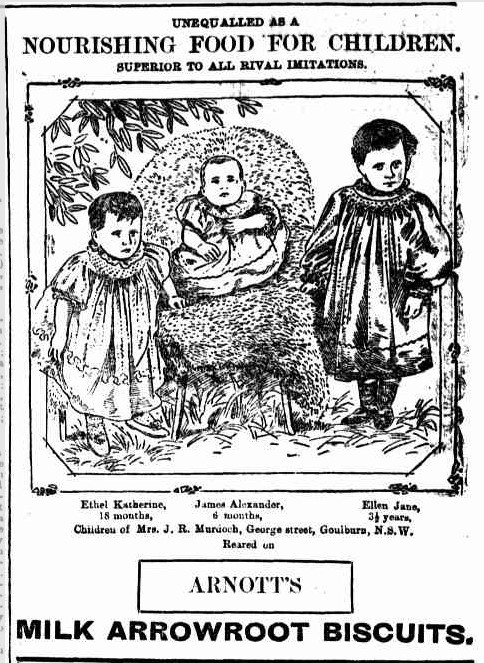
Advertising (1904, November 2). The Telegraph (Brisbane, Qld. : 1872 - 1947), p. 3 (SECOND EDITION). Retrieved March 4, 2023, from http://nla.gov.au/nla.news-article173286183
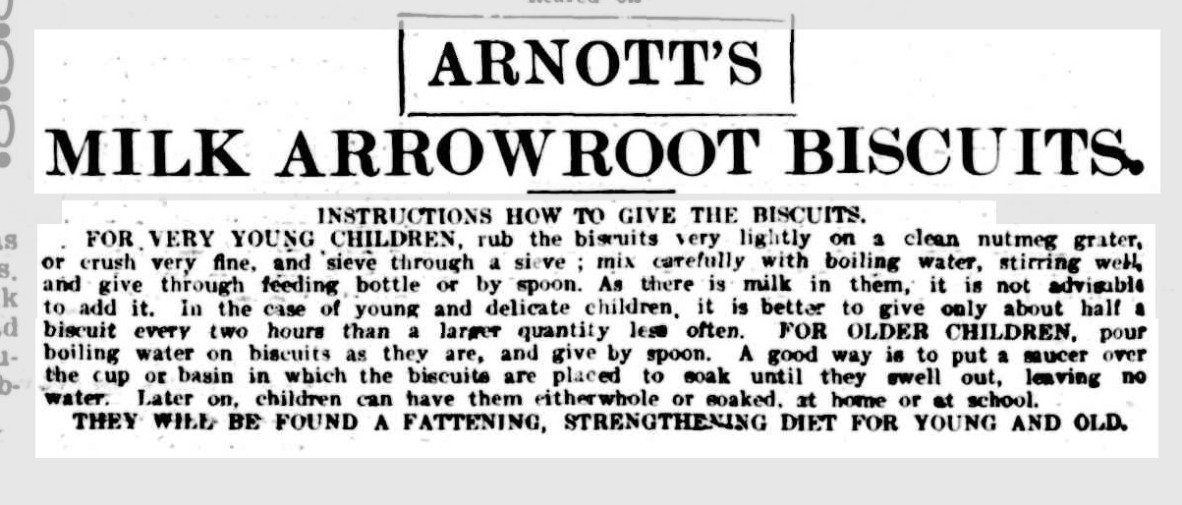
ARNOTT'S MILK ARROWROOT BISCUITS. (1904, August 6). The Queenslander (Brisbane, Qld. : 1866 - 1939), p. 25. Retrieved March 4, 2023, from http://nla.gov.au/nla.news-article22267666
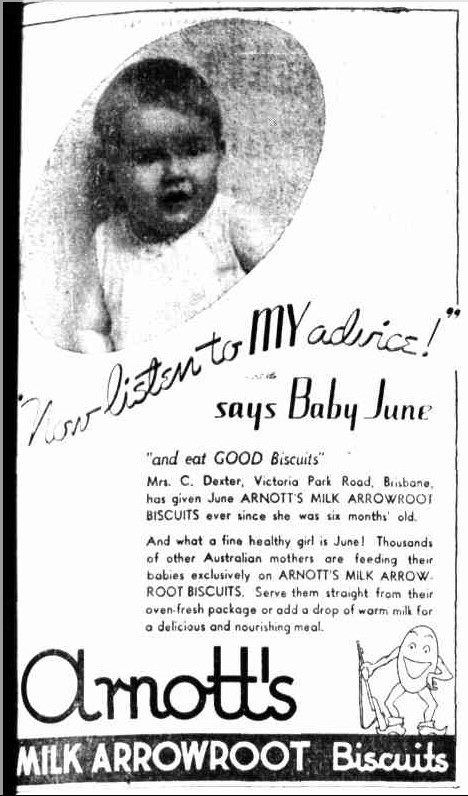
Advertising (1937, October 9). Maryborough Chronicle, Wide Bay and Burnett Advertiser (Qld. : 1860 - 1947), p. 5. Retrieved March 4, 2023, from http://nla.gov.au/nla.news-article151220307
In addition, various companies sold infant formula as the magical source of all nutrition. Newspapers ran stories like the following: ‘“I fed my daughter on lettuce because she liked it so well until I found out it was a great slimmer” said one mother, wondering why her growing child was not putting on any weight at all’.
As a result, the Mothercraft Association of Queensland was formed in 1931 with a purpose of educating women in the correct care of the infant. Five years later, in 1936, the Mothercraft Association of Queensland undertook to train girls in infant care.

25 MOTHERCRAFT CERTIFICATES (1938, December 8). The Courier-Mail (Brisbane, Qld. : 1933 - 1954), p. 2 (Second Section.). Retrieved March 4, 2023, from http://nla.gov.au/nla.news-article38723465
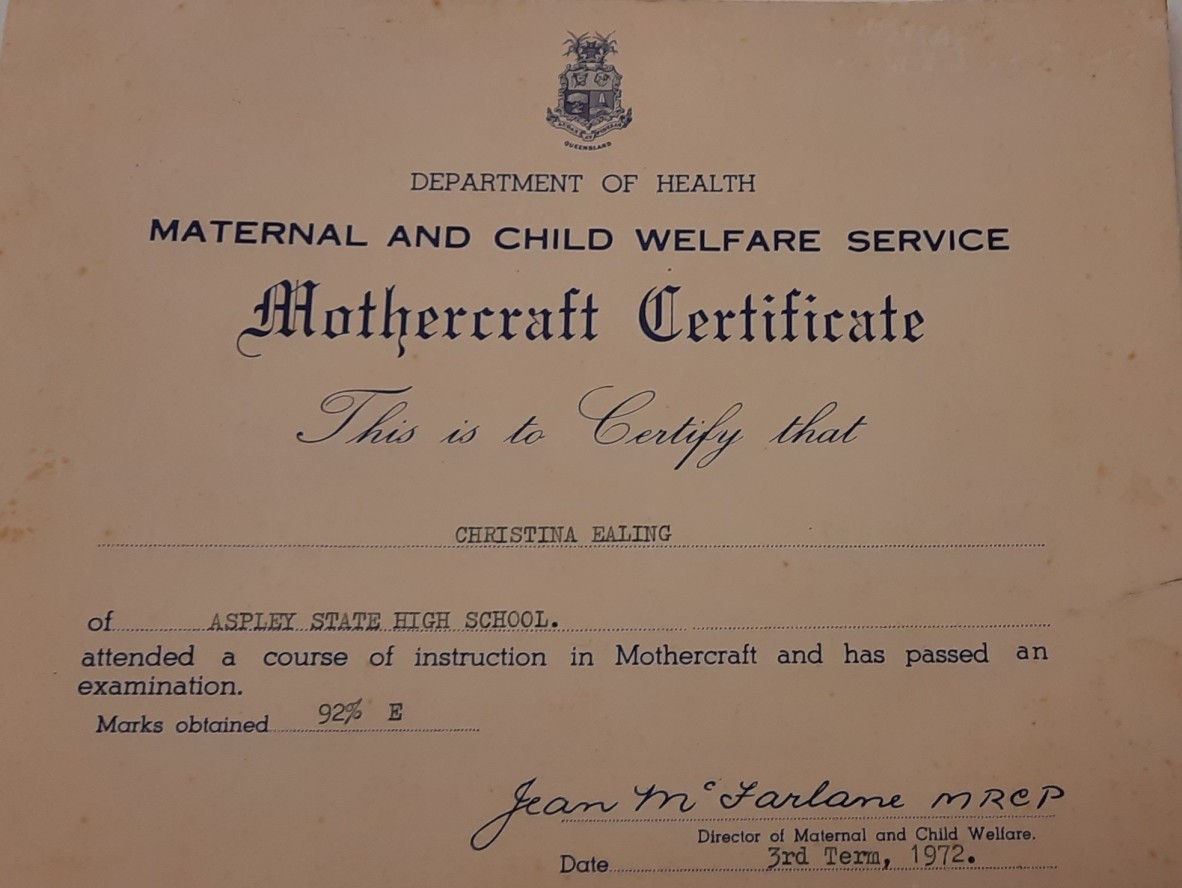
Mothercraft Certificate for Christina Ealing-Godbold, Aspley State High School, 1972. Photograph courtesy of Christina Ealing-Godbold.
The Mothercraft course
Initially, the subject was undertaken as part of what is now Grade 8 or the upper level of intermediate school. South Brisbane Intermediate School, North Brisbane Intermediate School, St Margaret’s School and Somerville House were the first schools at which the subject was offered. By 1964, the subject was compulsory for female students at all Queensland high schools.
In rural areas, the CWA also provided locations for training and supported the Queensland Government Rail Car that took the mothercraft course to remote locations throughout the state. The rail cars also delivered other government services such as dental care.
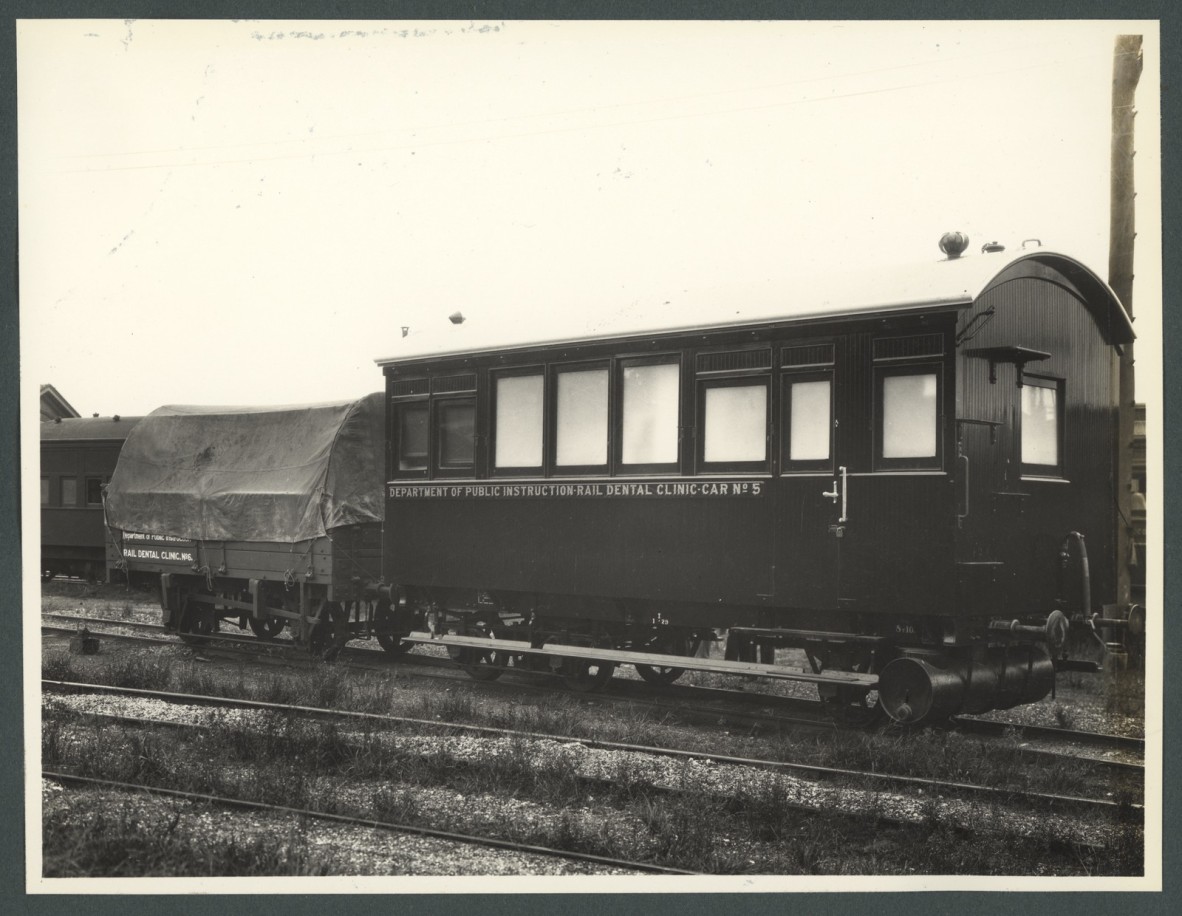
Rail car for dental services. Similar cars were used for teaching mothercraft in rural Queensland. http://hdl.handle.net/10462/deriv/122756
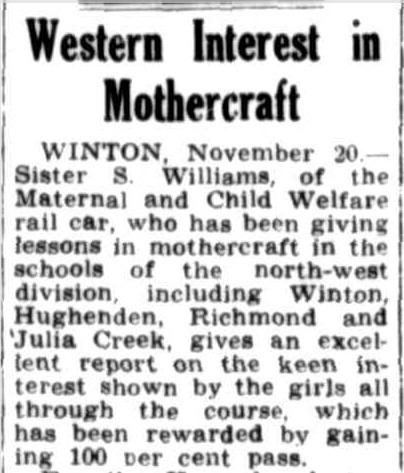
Western Interest in Mothercraft (1953, November 21). Townsville Daily Bulletin (Qld. : 1907 - 1954), p. 8. Retrieved March 4, 2023, from http://nla.gov.au/nla.news-article63219466
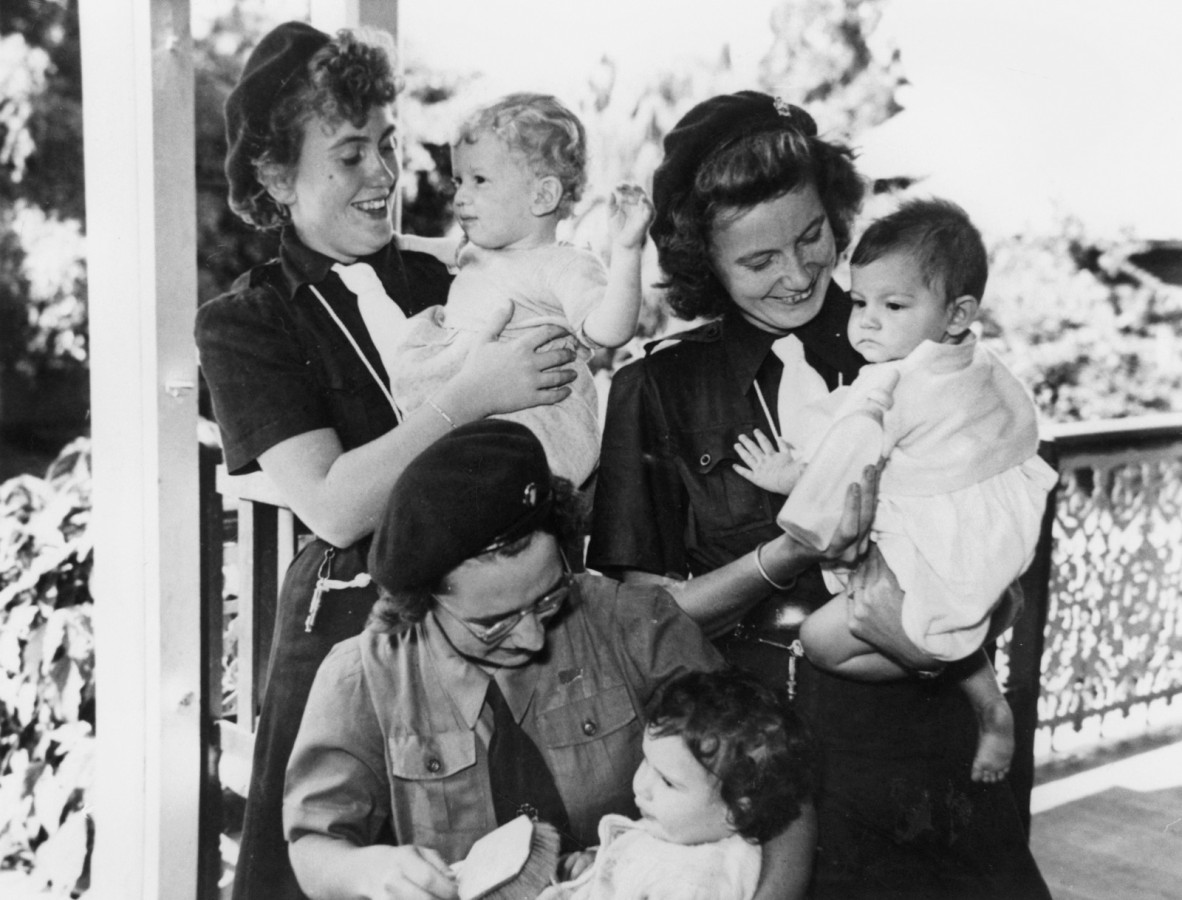
Girl Guides pictured with children from the Lady Cilento Mothercraft Centre, Brisbane, 1950, State Library of Queensland https://hdl.handle.net/10462/deriv/19130
Whilst there was discussion of teaching mothercraft and nutrition throughout Australia in the 1930s and there were hostels and centers to support new mothers, the Queensland program of educating all high school girls was a partnership between the Queensland State Government and a private organization, the Mothercraft Association of Queensland.
The course took 11 weeks of instruction and included bathing, clothing, feeding and hygiene. Instruction was based on the ten essentials of good mothercraft. Each student submitted a scrapbook illustrating the ten essentials and the best scrapbook at each school was awarded a prize. The scrapbook was compiled of images cut from the Women’s Weekly and other women’s magazines and newspapers to illustrate good practice in caring for your infant. In addition, life size plastic dolls were used to illustrate bathing, burping and proper sleeping arrangements for the baby.
The Ten Essentials of the mothercraft program were
- Food
- Water
- Fresh air and sunshine
- Regularity
- Exercise
- Cleanliness
- Sleep and rest
- Mothering – kindness and support.
- Management – ensuring all aspects of good mothering were observed.
- Clothing and Warmth.
It has been suggested that in the 1930s, the certificate could also be used as an employment asset as young girls were employed in family homes to care for children and undertake domestic chores. For later generations, the Certificate of Mothercraft was seen as a rather quaint and dated reminder of previous generations and their thinking.

Excerpts from a Mothercraft scrapbook.
32318, Gwendoline Baker Mothercraft scrapbook, John Oxley Library, State Library of Queensland https://onesearch.slq.qld.gov.au/permalink/61SLQ_INST/tqqf2h/alma99183719120502061

Excerpts from a Mothercraft scrapbook.
32318, Gwendoline Baker Mothercraft scrapbook, John Oxley Library, State Library of Queensland https://onesearch.slq.qld.gov.au/permalink/61SLQ_INST/tqqf2h/alma99183719120502061

Excerpts from a Mothercraft scrapbook.
32318, Gwendoline Baker Mothercraft scrapbook, John Oxley Library, State Library of Queensland https://onesearch.slq.qld.gov.au/permalink/61SLQ_INST/tqqf2h/alma99183719120502061
Mothercraft as a separate subject at Queensland high schools had run its course by the end of the 1970s.
The Mothercraft Association
The Mothercraft Association of Queensland produced a journal, aptly named Mothercraft which is held at the State Library of Queensland. The Association went onto establish mothercraft centers to assist with providing accommodation for mothers who required support. Mothercraft scrapbooks are also available in State Library’s collections for those who are interested in this aspect of Queensland’s education history.
As well as newspaper journalism, Dr Cilento and the Mothercraft Association produced recipe books for healthy infant feeding and for the working mother. This one is included in the John Oxley Library collection.

Square meals for the family / by Phyllis D. Cilento on behalf of the Mothercraft Association of Queensland https://onesearch.slq.qld.gov.au/permalink/61SLQ_INST/tqqf2h/alma996953864702061
Evolution of education for Queensland women
International Women’s Day has always focused on the importance of education to maximize the potential of women and girls, affording them the opportunity to achieve gender parity and success in both professional and personal spheres. Compulsory mothercraft training, whilst interesting to some girls, would not have been supportive of the achievement of broader opportunity and gender parity. The concept obviously addressed a social issue of the time (that is, a lack of understanding of nutritional information and good infant care) without appreciating the importance of education as a tool to widen perspectives and horizons, regardless of gender. The relevance of this program to the outcomes for Queensland school girls needs to be appreciated in the light of the International Women’s Day charter which states: “Because Education is Everything!” What did this educational program say about the expectations and intended future of most Queensland girls in the twentieth century?
Selected resources
- International Women’s Day
- Education Queensland - International Women’s Day
- Softly, Softly: How the Mothercraft Association of Queensland Co-existed with Government Policy, 1931-1961
- Feeding their babies : infant feeding advice received by Queensland women in the postwar period, 1945-1965 / Virginia Thorley
- The Nursery cookery book / compiled by the Mothercraft Association of Queensland.
- Mothercraft
- Square meals for the family / by Phyllis D. Cilento ... on behalf of the Mothercraft Association of Queensland.
- Gwendoline Baker Mothercraft scrapbook
- Ruth Collins school exercise books and Mothercraft scrapbook
More information
Plan your visit - https://www.slq.qld.gov.au/visit
One Search catalogue – http://onesearch.slq.qld.gov.au/
Membership – https://www.slq.qld.gov.au/services/membership
Ask a librarian - https://www.slq.qld.gov.au/services/ask-librarian
Comments
Your email address will not be published.
We welcome relevant, respectful comments.